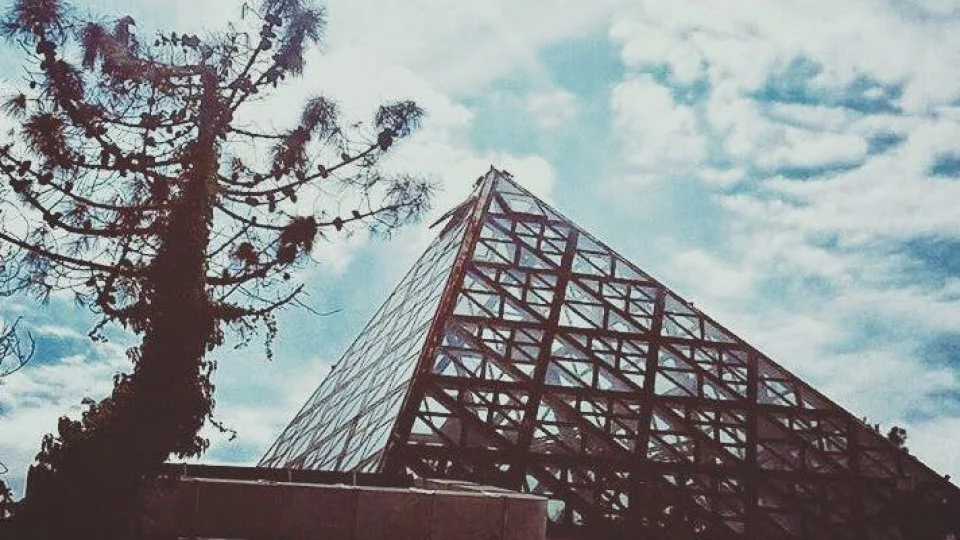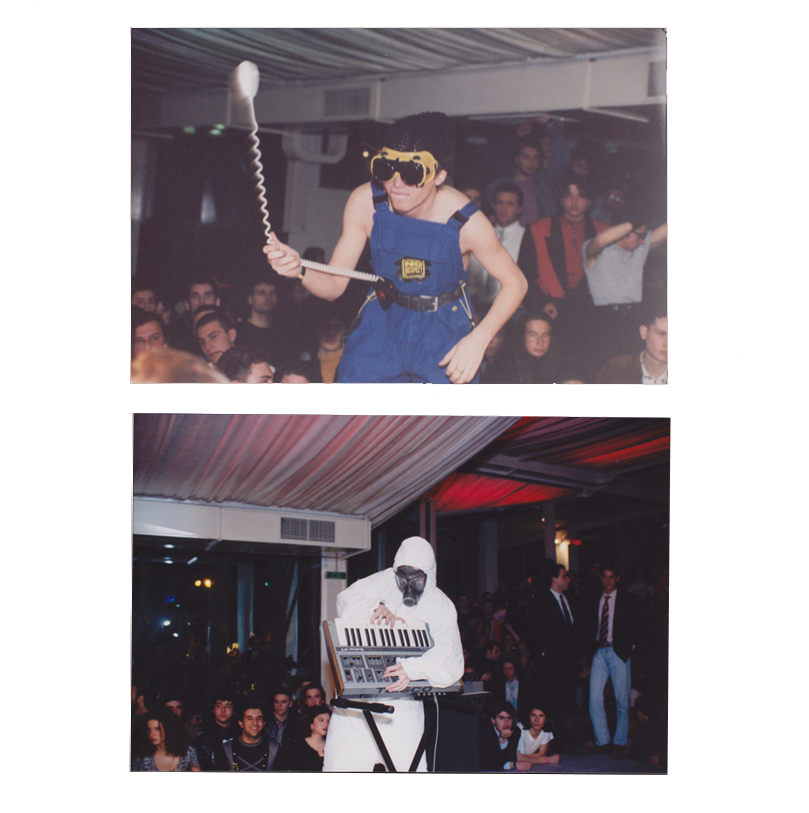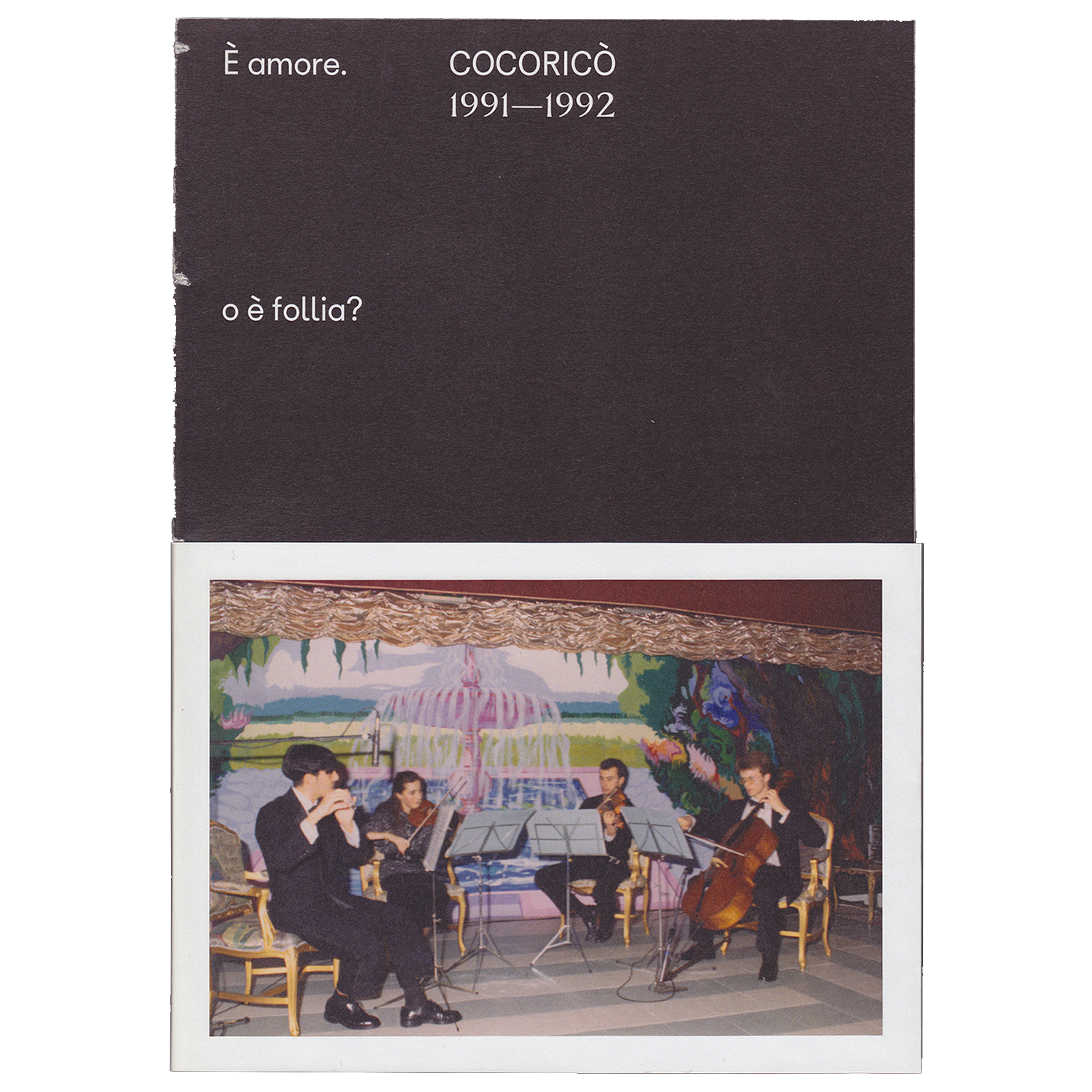Is it Love or is it Folly? Cocoricò and 1990s Italian Riviera Clubbing
Leigh Bowery guest of Cocoricò night London People, July 1991
From hosting Grace Jones’ birthday to witnessing Daft Punk and Aphex Twin being booed off stage, Cocoricò was the temple of Italo House in the 1990s. A pyramid-shaped club on the North East Italian coast that gave a voice to the Italian second summer of love generation and that forever subverted the rules of clubbing. A new book - E’ amore. o è follia? Cocoricò 1991-1992 - visually explores the activity and tremendous creativity of the discotheque that marked a pivotal time in the history of Italian and European music and pop culture.
“One night heading to the Cocoricò office to send a fax, I noticed some sparks coming from the pyramid [structure covering the club]. I decided to go and check what was going on, and I saw the owner Osvaldo Barbieri. His face was flushed whilst he was busy burning some resins. We both frightened, at first, then he started explaining me he was carrying out some well-wishing rites, and that he was in touch with a witchdoctor from Morocco who had sent him the resins. The same one who had previously helped him to retrieve some bonds that were stolen from his flat. Osvaldo carried on explaining that the shaman sent him the exact same codes and numbers that matched the check that had been used to pay the bonds to the thief. That was the moment we started to realise that Cocoricò had a magical aura.” These words from former Cocoricò art director Ferruccio Belmonte well capture the ethereal, slightly unsettling, and even nearly transcendental atmosphere that permeated the Italian club.
Set on the hills above the seaside of Riccione, Emilia Romagna, Cocoricò opened in 1989 within a glass and steel pyramid-shaped structure, a place somewhere between a James Bond villain’s secret headquarters and Sun Ra’s spaced-out and esoteric envision of the hippy dream that moved the birth of the Glastonbury Festival of Performing Arts and its iconic pyramid stage. It’s no wonder that Italian cinema maestro Federico Fellini was born in Emilia Romagna where he set Amarcord, a manifesto of his surrealistic and fervid imagination.
The iconic pyramid with its extensive glass surfaces was a futuristic piece of clubbing architecture
1989, after all, was the second summer of love. Acid was dropped as easily as a glass of water, and acid house and maracas-shaking baggy indie-rock were the face of the British youth squeezed inside The Hacienda or gathered on Spike Island. Culture, fashion, and music tastes might have been slightly different, but in Emilia Romagna - the Italian region than since the mid-1950s had redefined the parameters of post-WWII Italy seaside amusement - teenagers were moved by similar feelings. A massive image representing the Holy Mary holding dying Jesus in her arms lied underneath the writing ‘The Age of Love’ printed on a banner framing Cocoricò’s DJ booth.
Between a piadina - Emilia Romagna’s traditional flat bread toasted sandwich - and a bottle of Peroni, acid was dropped there too, in a kaleidoscopic game of lights filtered through the pyramid’s extensive glass surfaces. It was these enormous windows that persuaded record stockist and music connoisseur Ferruccio Belmonte to accept Cocoricò’s founder Osvaldo Barbieri’s proposal to take the helm of the club’s art direction in the second half of 1990.
A selection of flyers showing Cocoricò’s eclectic and transgressive event schedule
Although the city of Riccione, just like the whole Emilia Romagna Riviera, had already been the hotbed for Italian clubbing since the mid-1970s, Cocoricò brought something new to it: an international vision. Belmonte understood the Italian youth’s need and desire for an entertainment that went beyond local discos with local DJs. Between 1991 and 1992 Cocoricò quickly gained a legendary fame thanks to its visionary bookings that brought internationally-renowned names behind the decks, and attracted people from all over Italy on the dancefloor.
Belmonte went beyond mere clubbing and gave Cocoricò a total art twist that channeled fashion, theatre, circus and queerness. From Leigh Bowery performances and Jean-Paul Gaultier runaway shows, to Grace Jones’ birthday party celebrations, the club represented a unique window on the international artistic zeitgeist. Such curatorial creativity was mirrored by Cocoricò’s flyer and poster production, which varied from art deco and cyber-punk to space-age and colourful 1950s-inspired graphics à-la Fiorucci.
Cocoricò flyers and promo material was an explosion of styles and graphic creativity
Along foreign guests like house forefather Frankie Knuckles and Eddy de Clerq, the club hosted a string of resident DJs - Cirillo, Parrini, Ralf, Noferini, and Bratti - who acquired a legendary status among Italian youngsters. Surely Cocoricò, despite its international vocation, maintained a strong Italian identity, witnessed by the crowd booing off stage emerging talents Daft Punk and Aphex Twin, who both had to interrupt their sets before the audience burst into joy when resident DJs took control of decks again. Although these episodes show all the provincialism permeating Italian culture, they also highlight the impact the Cocoricò sound had on its audience.
Belmonte, along with owner Osvaldo Barbieri, was responsible for bridging the challenging gap between mass-entertainment and curatorial vision, way before clubbing started to be intended as culture. Despite the inevitable media demonisation of the venue, Cocoricò stood the test of time and, to these days, it still is highly regarded on a European scenario.
Live performance Who Is Elvis - Phenomenia, March 1991
Published in 300 hand-bound copies by Amphibia and edited by Jacopo Lega, E’ amore. o è follia? Cocoricò 1991-1992 traces the history of those two unrepeatable seasons underneath the pyramid’s strobe lights throughout the memories and extensive flyer and photo archive of art director Ferruccio Belmonte.
The last copies can be ordered via Amphibia website.









